The best lawn fertiliser can help by feeding the soil if your grass is lacking in colour and looking a bit pale, after all, you need to keep that lawn mower busy. While you can opt to spread grass seeds if you want to fill in those unsightly bare patches, lawn fertiliser encourages growth where grass just simply needs reviving, making it look thick and lustrous once more.
Employing the help of fertiliser will help your grass stay strong, keep its colour and continue to grow. The crucial thing here is knowing exactly what lawn fertiliser to use that will give you a lawn with lasting health, and that won’t be environmentally destructive.
Best lawn fertiliser at a glance:
• Best overall fertiliser: Miracle-Gro Evergreen Complete 4 in 1 Lawn Food - View now on Amazon UK
• Best liquid lawn fertiliser: envii Seafeed Xtra - Organic Liquid Seaweed Fertiliser - View now on Amazon UK
• Best organic lawn fertiliser: Just Grow 'DUO' 5KG Organic Fertiliser - View now on Amazon UK
• Best pet-safe lawn fertiliser: Westland 20400352 SafeLawn Child and Pet Friendly Natural Lawn Feed - View now on Amazon UK
It’s not just about attending to the nutritional demands of your lawn, you need to care for the microorganisms and overall soil health, too. In a forest, this happens naturally when dead flora and fauna break down, but in a tidy garden, that doesn’t happen.
That’s why we’ve created this guide to help you choose effective, sustainable fertilisers for your lawn. Please scroll down for fertiliser FAQs, including what NPK is, when and how to fertilise your lawn and fertiliser alternatives.
The best lawn fertilisers for your garden UK
Best liquid lawn fertiliser
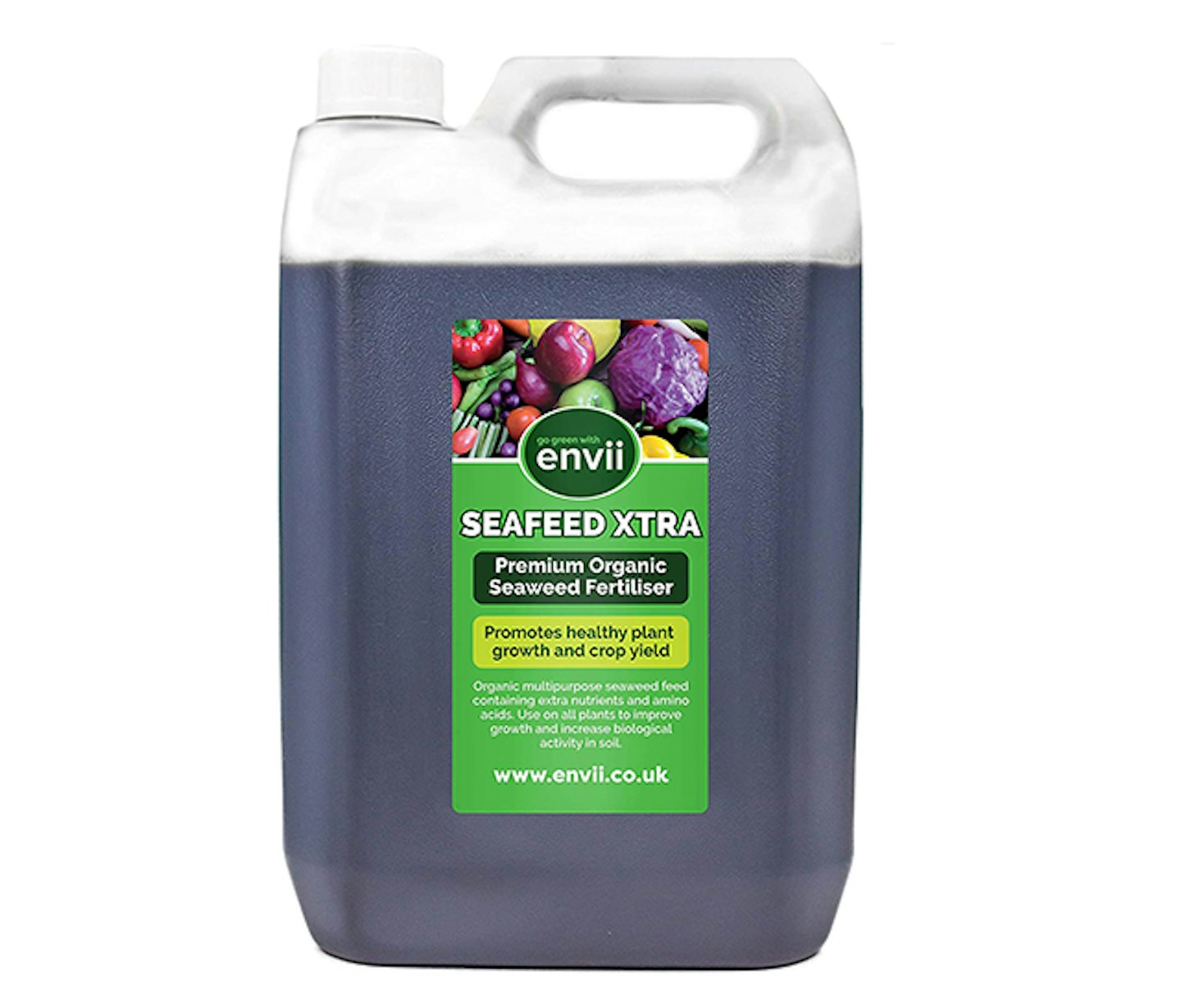 envii/Amazon
envii/AmazonSeaFeed Xtra is a premium, organic seaweed fertiliser that promotes strong, lush growth for plants and lawns and improves the biological activity in the soil. Seaweed also has iron in it, which gives extra greenness to your lawn. You can use this product on other crops, flowers, and indoor plants too. It comes in 1, 5, 10, and 20-litre containers that are made from recycled ocean plastic.
Customer Review: "I plant trees on behalf of the Woodland Trust and some of those recently planted were showing signs of distress due to the continuing lack of rainfall and very hot conditions. After reading reviews for this product I have begun using it whilst watering the trees. The results are quite amazing. Over the course of ten days, new leaf buds are appearing from areas that previously looked dead. Cannot recommend this product strongly enough."
Pros
- Versatile and strengthening
- Plant-based and organic
- Anti-stress compounds
Cons
- Large containers are awkward to use - decanting is recommended
Best organic lawn fertiliser
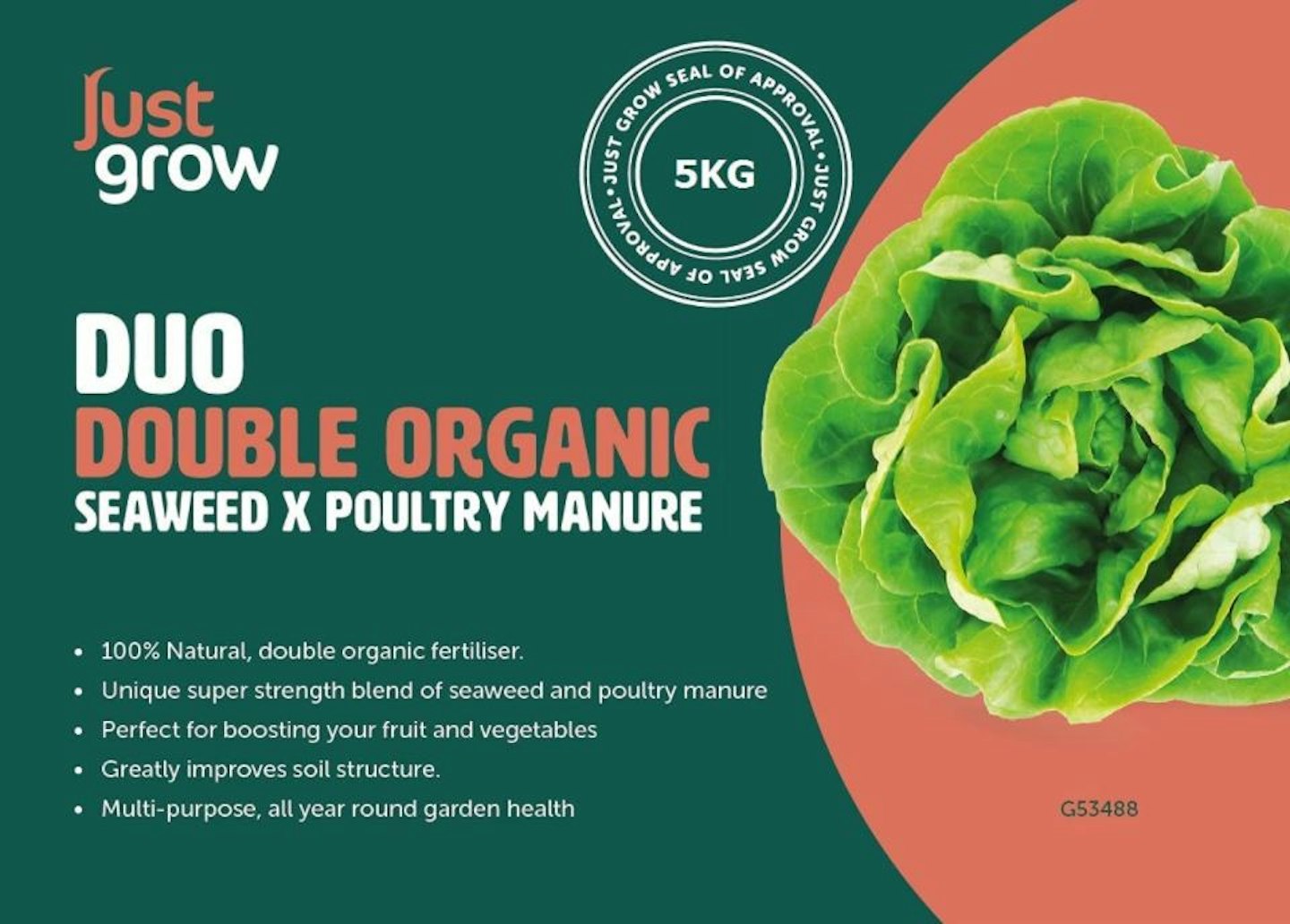 Just Gro/Amazon
Just Gro/AmazonThis is a combination of seaweed and chicken manure. The seaweed acts as a supplement in improving soil quality, while the chicken manure acts as a stimulant for attracting bugs and worms. It comes in pellet form and can be used with any crop, not just lawn. One kilogram covers about 10 square metres.
Customer Review: "Very good quality."
Pros
- Organic and versatile
- Super strength with double fertiliser
- Perfect for fruit and veg
Cons
- Chicken manure may smell
Best natural lawn fertiliser
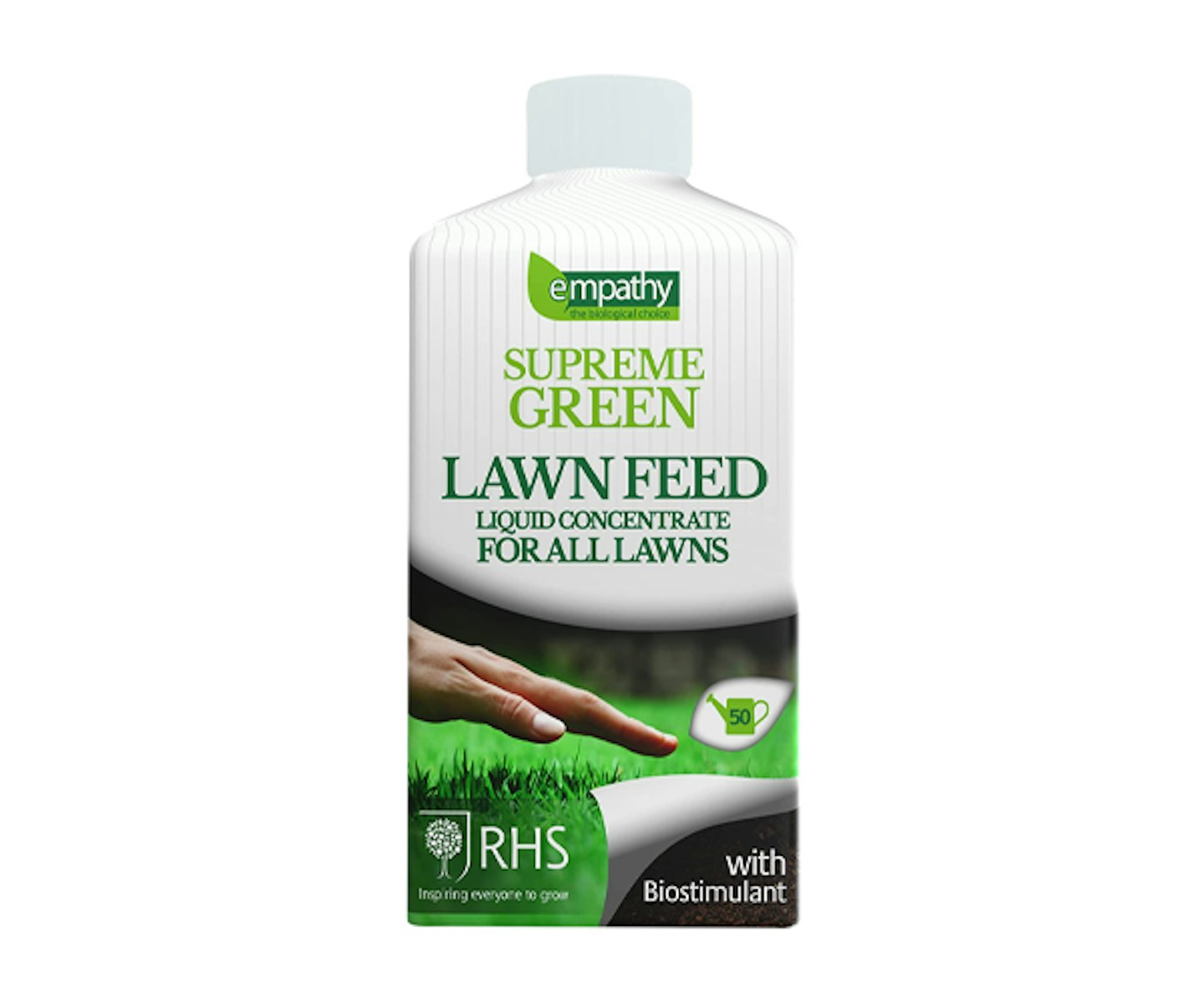 Plantworks/Amazon
Plantworks/AmazonThis concentrated liquid feed is based on seaweed extract derived from sustainably harvested kelp, manufactured using a unique cell burst process. This process ensures maximum retention of the growth stimulants found in kelp, along with a wide range of nutrients, vitamins, and amino acids. The feed also contains additional nutrients in the form of nitrogen, phosphorous, potassium and iron to help maintain a healthy green lawn that is resistant to the emergence of weeds and moss. This product is endorsed by The Royal Horticultural Society.
Customer Review: "This is an excellent product that, once established, produces lovely rich green grass to make a lawn anyone would be proud of. I had previously used Empathy Supreme Green Lawn Seed when I created a fresh lawn at my previous property. Within just a few months I had a lawn that was the envy of the neighbours (and of course, I didn't let on that this was the 'secret' product I'd used). Anyway, the lawns around the house we've recently moved into had bare patches - so it was a no-brainer really when it came to choosing this product again to repair my lawn, with a view to bringing it back to life. And, just like before, I'm very pleased with the end results."
Pros
- Suitable for all lawns
- With plant development
- Extra iron and kelp for greening
Cons
- Takes a while - but worth the wait
Best pet-safe lawn fertiliser
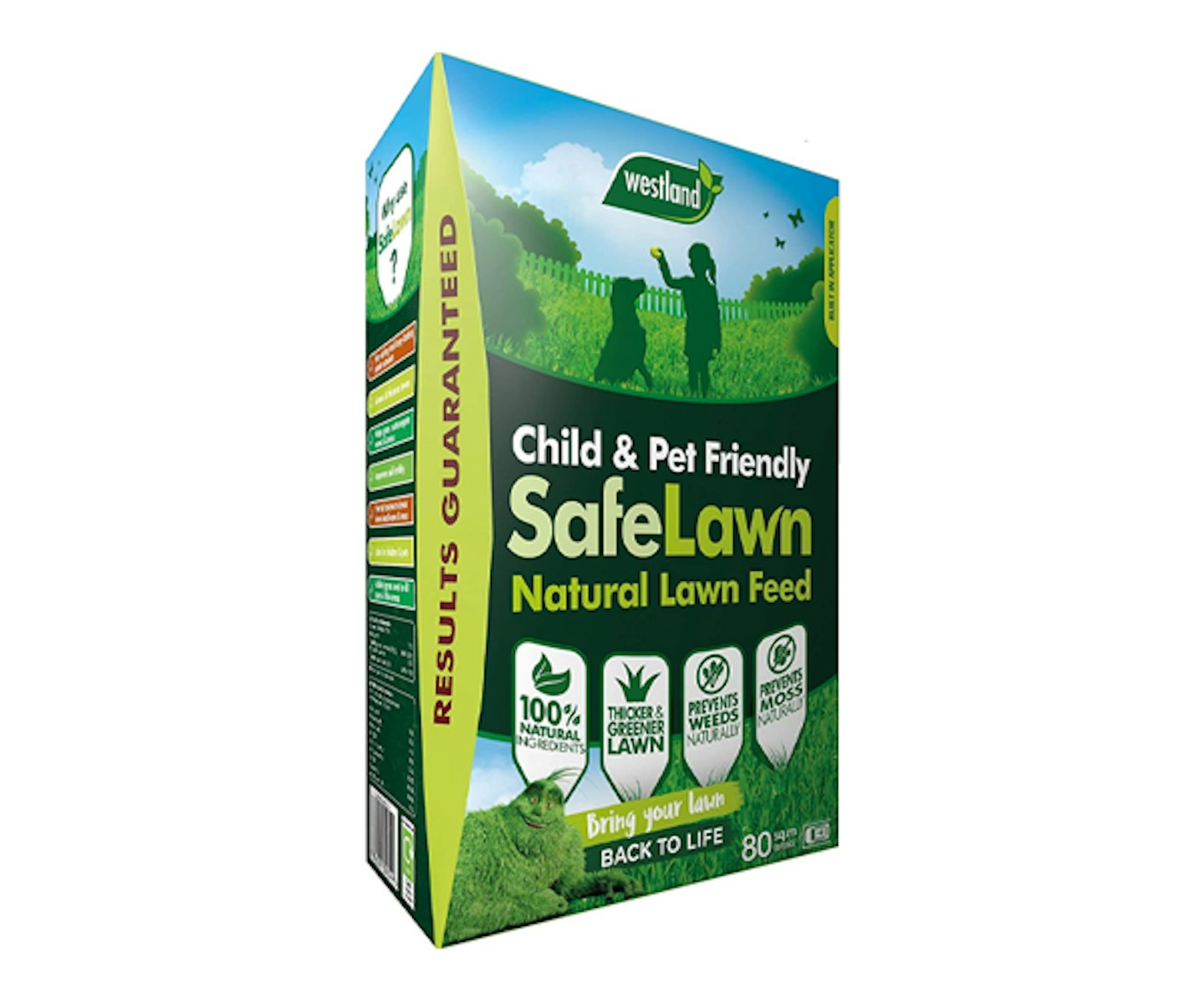 Westland/Amazon
Westland/AmazonWestland SafeLawn is a child and pet-friendly natural lawn feed that contains 100 per cent natural ingredients that will thicken and green your lawn, resulting in the grass naturally preventing the growth of weeds and moss. Westland SafeLawn contains fast-acting and long-lasting plant nutrients, friendly bacteria to break down dead leaves and moss, and added grass seed to fill gaps and thin areas. When using this product, you can expect that in seven days, your lawn will become greener and healthier.
Customer Review: "I don't use a week killer in with my lawn feed - over years the week killer built up mats of dead moss beneath the surface that needed to be removed by hand. This product is excellent - greens up the grass in no time and keeps it healthy - and I am enjoying the daisies and clover that now grow in it now I no longer use week killer."
Pros
- Only natural ingredients
- Improves soil fertility
- Transforms organic matter into nutrients
Cons
- Rake required for even distribution
Best rated lawn fertiliser
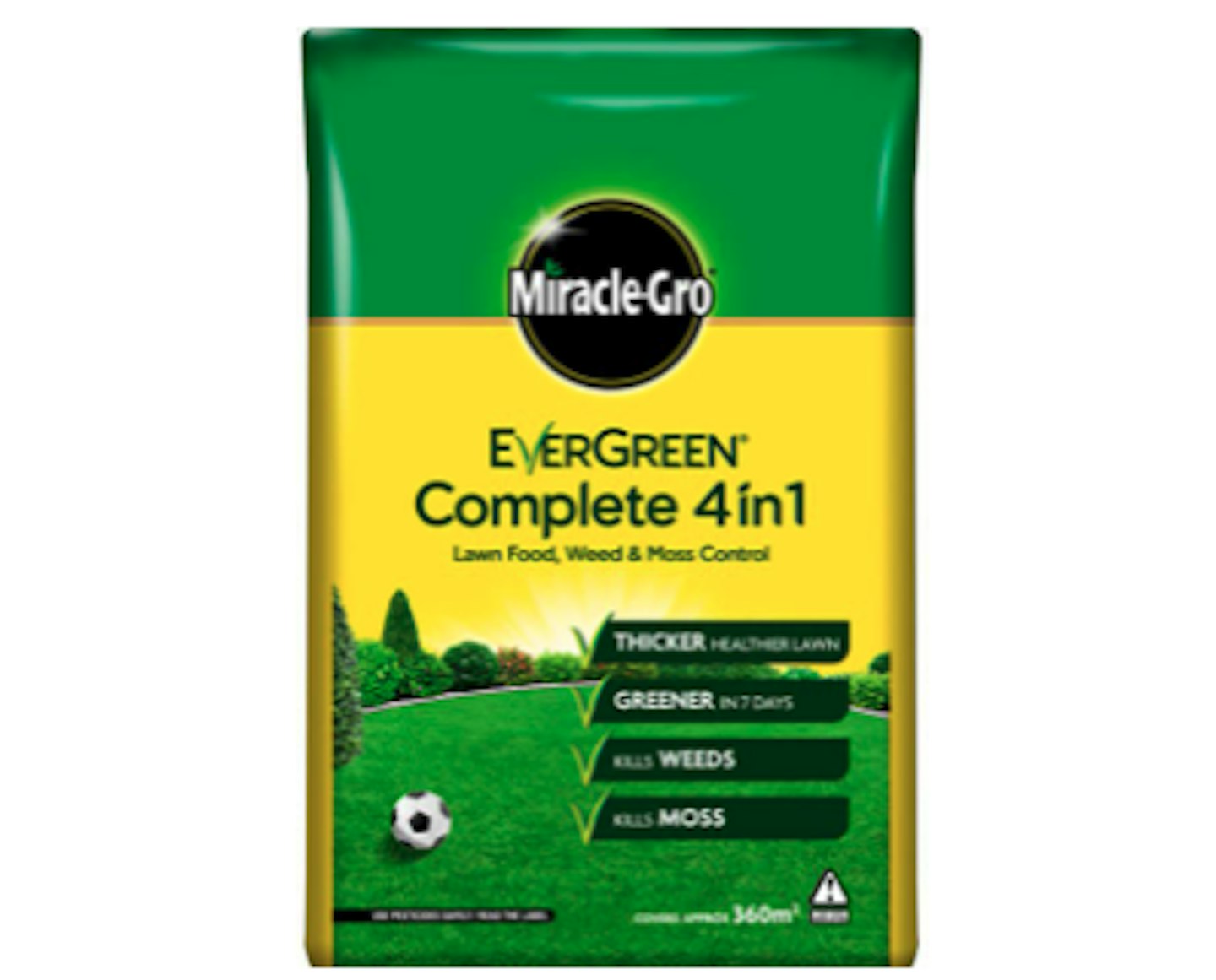 Miracle-Gro/Amazon
Miracle-Gro/AmazonThis is top-rated on Amazon for a reason. With over 13,000 reviews with an average of 4.4 stars, Miracle-Gro Evergreen Complete lawn food creates a thicker, greener and healthier lawn whilst killing weeds and moss. The one-stop solution promises results in as fast as seven days.
Customer Review: "This is a fantastic product. Last year having used another product, which killed large sections of my grass and not the weeds, this product was easy to use and did not kill my grass. The moss was dead within a week and the other weeds, which there were a lot of, including dandelion, daisy, clover and other unknown weeds mostly all gone after 3 weeks. I just used a roundup spray for the odd weed, which was left and now have a lovely weed-free healthy lawn."
Pros
- All-in-one for fertilising and killing
- Good value and highly rated
- Versatile and effective
Cons
- Needs to be ideal conditions for the application
- Wear protective gloves when sprinkling
Best spray lawn fertiliser
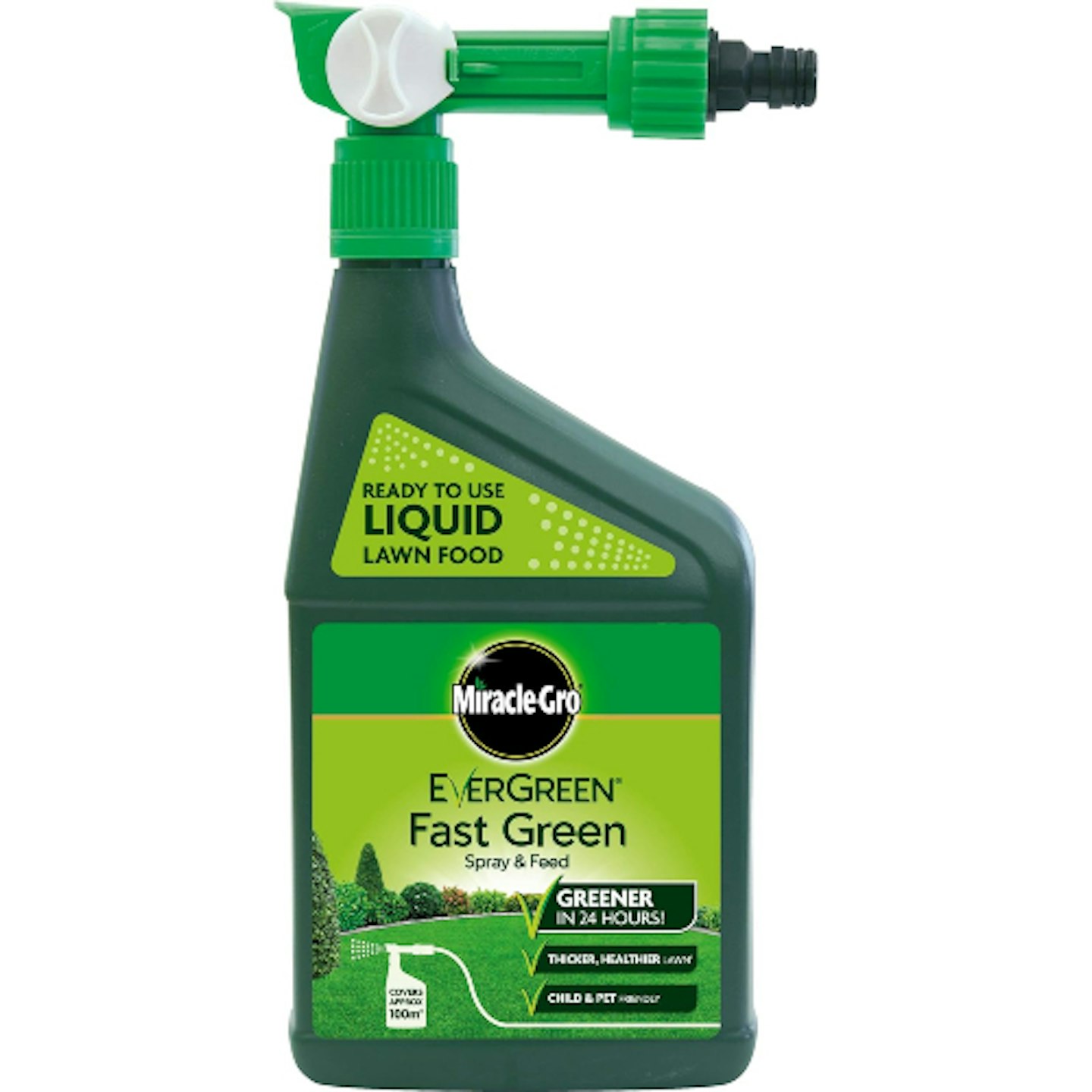 MiracleGro lawn spray
MiracleGro lawn sprayA lawn fertiliser you can simply spray on the ground is a simple, time-saving solution that lets you cover lots of ground quickly. You attached this Miracle-Gro Evergreen option to your garden hose, and this multi-tasking solution will water and feed your lawn at the same time. Miracle-Gro promises that under normal growing conditions, Miracle-Gro EverGreen Fast Green Spray & Feed will give your lawn a richer, greener colour in just 24 hours and will last up to six weeks, after which it's recommended you reapply it. This one-litre bottle will cover you for an area of 10 by 10 metres.
Customer review: "Very pleased with this. So easy to use, just attach to the normal hose fitting, waters in automatically. See results in the next few days. My lawn is a darker green with lush growth. This format is so easy to use and great value."
Pros
- Water and fertilise at the same time
- Quick results
Cons
- Requires a hose to apply
Best lawn fertiliser with weed killer
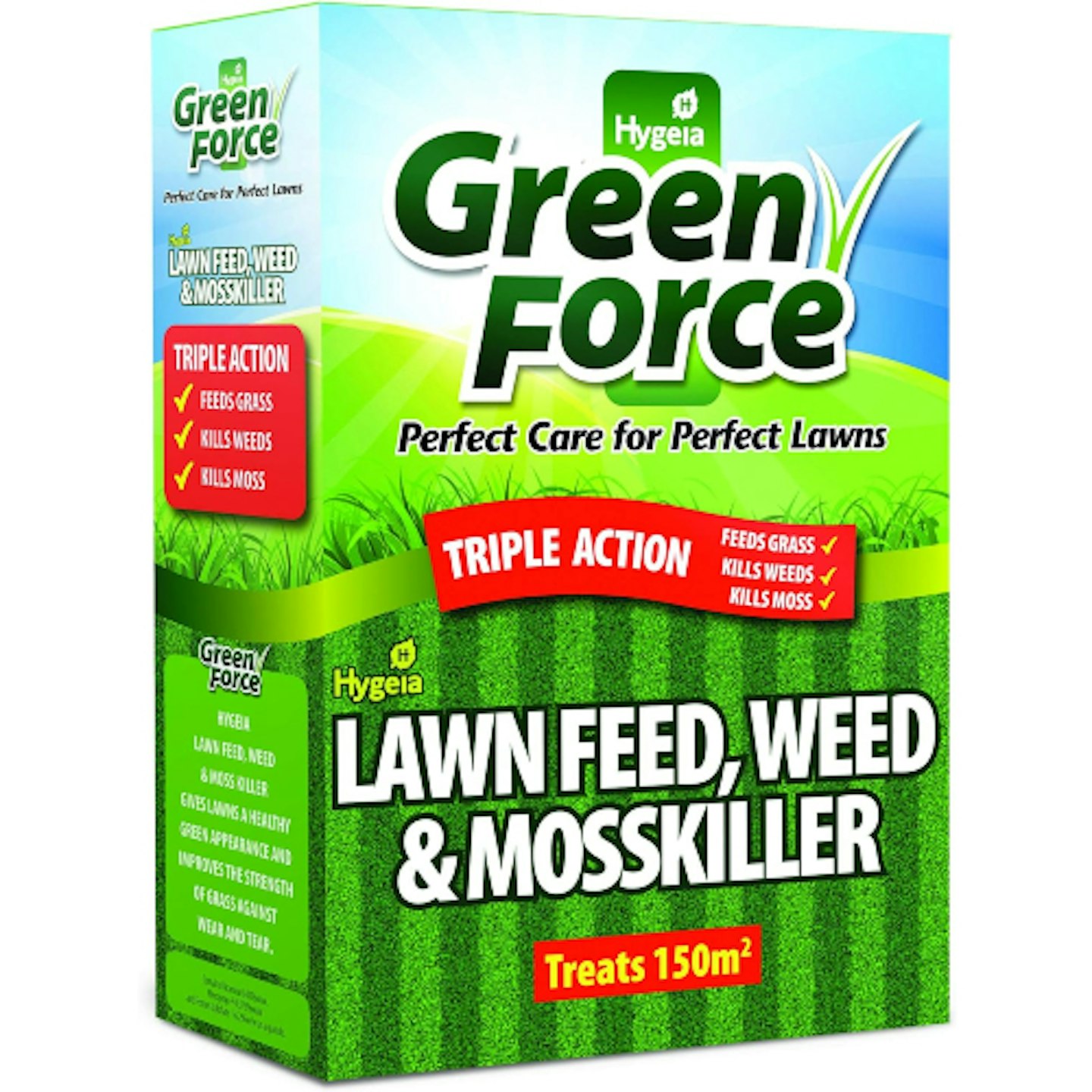 Greenforce/Amazon
Greenforce/AmazonAnyone who likes their garden products to multitask should consider Greenforce's highly-rated lawn feed. This is not just a lawn fertiliser but a three-in-one solution with the ability to kill weeds and moss as it feeds your lawn. It's advised you use this from April onwards and three days after last mowing. This should make your grass thicken and become a rich green colour, while weeds and moss will blacken and die. After a week or so, you can rake out the dead growth, reapplying the feed if required.
Customer review: "This product definitely works, however it takes a while. I spread the stuff on my weed-riddled lawn on 21 June (almost 4 weeks ago). Whilst some of the weeds turned black immediately, others seemed unaffected. The grass was patchy and a bit dry looking. As of today, the grass is lush and green and thick, and almost 60% of the weeds have died off. It says it will take up to five weeks for full effect so I'm looking forward to seeing the final results in about 10 days."
Pros
- Triple action
- Treats 150 square metres
Cons
- Can be slow to take effect
Lawn fertiliser FAQs:
What are the types of lawn fertilisers?
Synthetic formulas - Chemical fertilisers that offer immediate release and quick greening of the lawn, but at the expense of long-term soil health. These are manufactured using fossil fuels. They tend to be cheaper.
Organic formulas - Naturally made from once-living organisms or their by-products. These are not as fast-acting as synthetics, they release their nutrients more slowly. This is better for your garden's long-term health if used properly.
Other aspects to consider are:
Granular fertilisers - A popular choice due to the ease of application.
Liquid or water-soluble fertilisers - Spread using a hose, providing a quick and effective way to introduce nutrients rapidly to the grassroots.
When is the best time to fertilise my lawn?
It's well-established lawn care tip to fertilise your lawn twice a year, between late March and April, in the early summer, and once more in late autumn. For best results, apply fertilisers when the soil is moist or when rain is expected.
How to fertilise the lawn
Your lawn will get the most benefit from a fertiliser when you've just mown the grass. By feeding the newly shorn lawn with fertiliser, will give the grass more time to absorb the nutrients before the next mow. If you mow your lawn after fertilising, you may disrupt the fertiliser before it has a chance to sink in properly.
You should not fertilise dry turf – there should be moisture in the soil for the grass plants to be able to take in the nutrients.
How you apply the fertiliser product will likely depend on the product's individual instructions, but for the most part, you can use a watering can for liquid fertiliser or spread it by hand if you are using granules.
Some lawn fertilisers may come with spreaders to make it easier to get an even distribution of feed across your lawn. You can also buy spreaders separately.
Should I water after fertilising?
Yes, always water your lawn before and after fertilising - or wait until it is due to rain.
What is NPK?
NPK stands for nitrogen (N), phosphorus (P) and potassium (K). When you buy a commercial fertiliser, you will see an analysis of the NPK content on the packaging.
You will generally see an NPK ratio on the label such as 7:4:7, for example. This is the product's percentage of nitrogen, phosphorus, and potassium. These ratios vary from product to product, but as a rule, you want to avoid anything with high percentages. This is often reserved for cheap synthetic products that offer a quick fix.
What are alternatives to fertiliser?
There are alternatives to packets of fertiliser if you want more natural ingredients:
Chicken manure is great for encouraging bugs and worms in the soil. It smells a bit, so best to apply it in cooler weather and when damp.
Grass mulch is great for helping retain the ground's moisture and encourage worms. If your lawnmower has a mulcher already then that's even better because it's free. But just be wary that it can encourage more weeds.
What to read next
Discover everything you need to know to make your outside space look fantastic, quickly and easily, with hundreds of simple ideas, designer tricks, affordable products and expert advice with a Modern Gardens Membership. Find out more about the benefits of being a Member now.
Natalie Corner is the Commercial Content Editor across the Specialist Portfolio for Bauer Media and is slowly learning how to care for her plant babies. When she's not soaking up the three days of sunshine in the great British outdoors, she's testing out the latest BBQ products.

